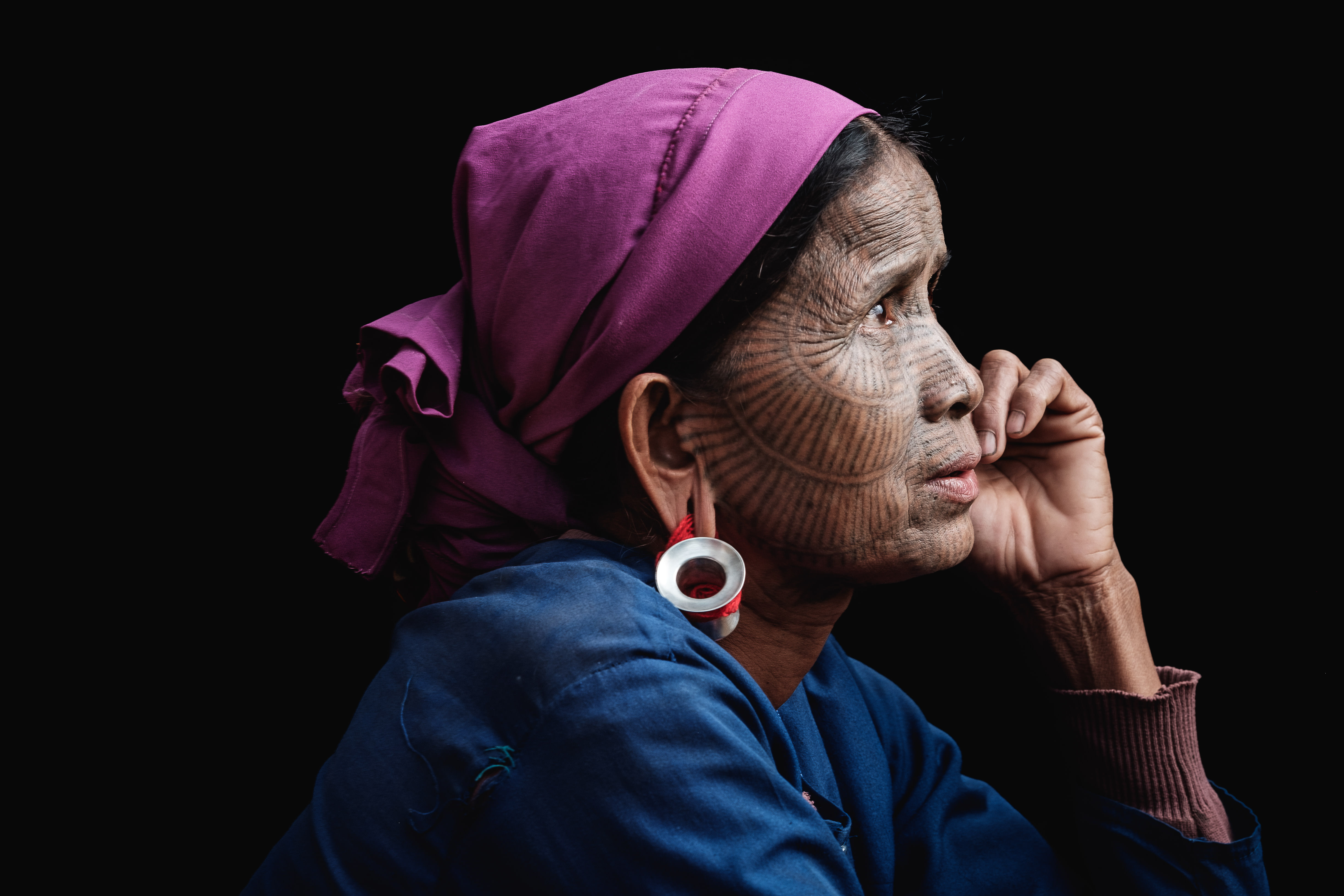Tattoos of Asia

Written and photographed by Dylan Goldby
I sit in Benjun’s small, private quarters as the village representatives are holding a meeting in the much larger main room. Benjun cradles his grandson and tells me of his time and the changes his people have undergone. During his time, he has seen schools built and children educated. He has seen the spread of Christianity as the dominant religion.
It wasn’t always that way. Tugging at his shirt, he tells me of a time when he would only wear clothing if he was going to war or celebrating a victory. You see, Benjun was a headhunter of the Konyak people. His facial tattoo documents that history and is a permanent reminder of how the world has changed for him and his people.

When one looks at the modern world, people have never been closer together and the quality of life has never been higher. We have unparalleled access to information, which has allowed people to make a life for themselves in ways that were simply not possible before. Access to that information is very quickly becoming ubiquitous. People are more aware of their own situation and the way others live. This has given us amazing opportunities to improve our own lives and those of others. The other side of the coin is that we are very quickly losing what makes us individuals or makes our own cultures special. The world’s cultures have developed important traditions and ways of expressing themselves over the centuries that they have been apart, but in the world we have built for ourselves, those differences have a diminishing role.

In many societies, tattoos have always been taboo and only worn by those willing to place themselves into a subculture. However, for others, tattoos have been an outward tradition that solidified their identity and represented their people. My project, Tattoos of Asia (tattoosofasia.com), focuses on cultures that have taken the ultimate step in tattooing their faces as a symbol of their people. By removing all distractions and allowing the subject’s face to tell its own story, the project attempts to see beyond an outward mark that divides peoples and show that we are all human underneath, how we choose to present ourselves, or what our culture demands of us. In some cases, like Benjun’s, these tattoos were part of a darker culture that is no longer needed in the modern world.

Facial tattoos may not be a necessary part of the modern world, but they were a part of so many lives not so long ago. This project aims, in some small way, to preserve those faces for people like Benjun’s grandson to remember where they came from.
The Author
Dylan is an Aussie photographer based out of Seoul. He cut his teeth working in the editorial industry in Korea and then moved into working on personal projects for the preservation of culture all around Asia. His work has been seen in global publications as well as featured by Nikon Asia. His desire to connect with and document the cultures of Asia led him to self fund a 128-page book about the lives of the Lai Tu Chin people of Myanmar. The successful completion of this project has only fueled his desire to do more work on the peoples of the region.






This is awesome!
Awesome! we love tattoos!